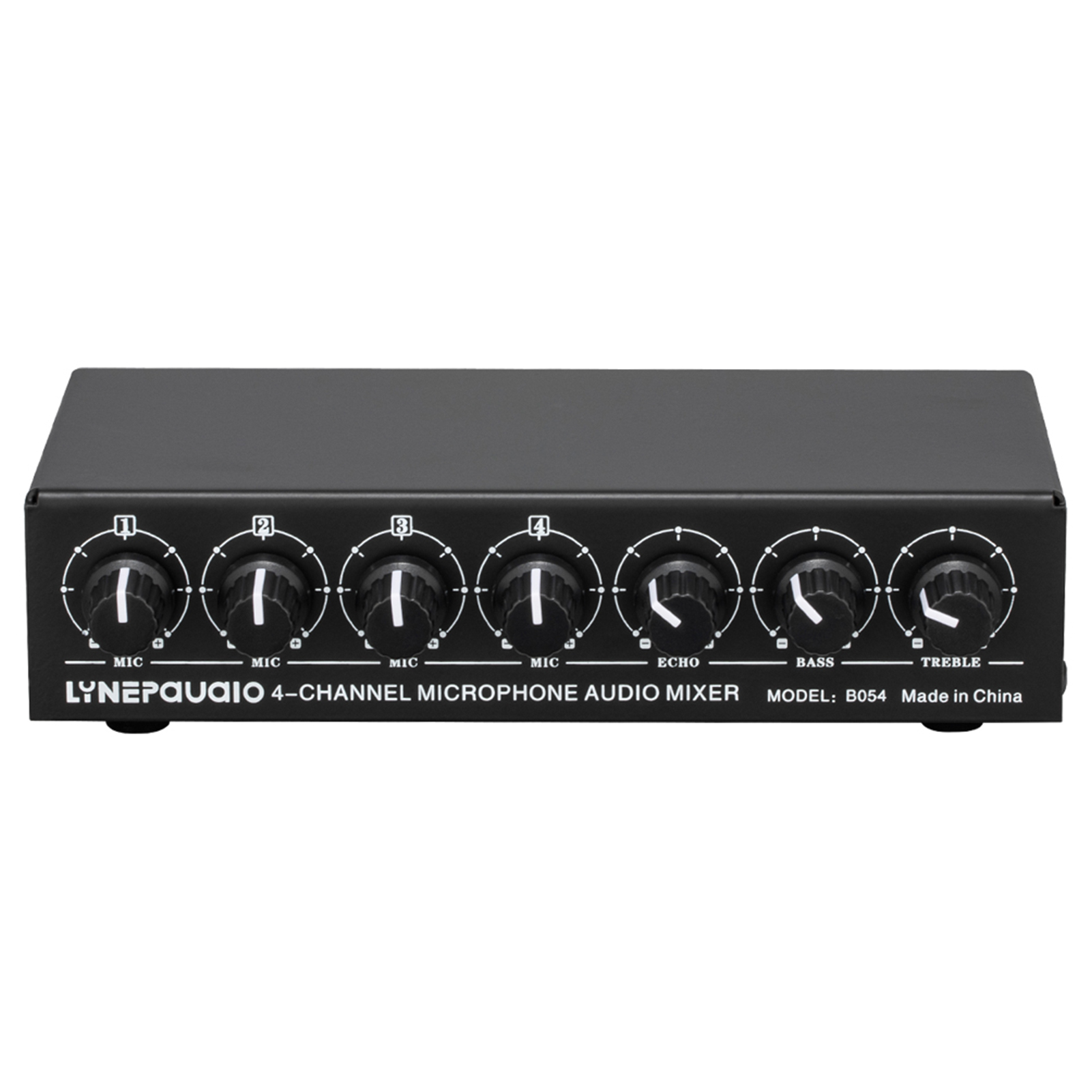

In practice, mixers do more than simply mix signals. A mixing console in a professional recording studio may have as many as 96 channels. A nightclub stage's mixer for rock music shows may have 24 channels for mixing the signals from a rhythm section, lead guitar and several vocalists. A coffeehouse's tiny stage might only have a six-channel mixer, enough for two singer-guitarists and a percussionist. A DJ mixer may have only two channels, for mixing two record players. A typical, simple application combines signals from microphones on stage into an amplifier that drives one set of loudspeakers for the audience. Mixing consoles are used in many applications, including recording studios, public address systems, sound reinforcement systems, nightclubs, broadcasting, television, and film post-production. The modified signals are summed to produce the combined output signals, which can then be broadcast, amplified through a sound reinforcement system or recorded. Depending on the type, a mixer is able to control analog or digital signals. Inputs to the console include microphones being used by singers and for picking up acoustic instruments, signals from electric or electronic instruments, or recorded music.

In sound recording and reproduction, and sound reinforcement systems, a mixing console is an electronic device for combining sounds of many different audio signals. An audio engineer adjusts a mixer while doing live sound for a band.


 0 kommentar(er)
0 kommentar(er)
